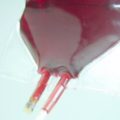
With the multitude of chemical compounds contained in cannabis, odds are that at least a few of them are going to be beneficial to humans. In current research on how to modulate cannabinoid receptors in the human body, Dr. Gregory I. Liou, a molecular biologist at the Medical College of Georgia, has found that cannabidiol (a cannabis compound) could prevent the overabundance of leaky eye blood vessels associated with diabetic retinopathy.
As the leading cause of blindness in the United States, diabetic retinopathy is a major health concern for more than 16 million American adults. Diabetic retinopathy occurs when high levels of glucose, stemming from unmanaged diabetes, trigger the oxygen-deprived retina to grow more blood vessels. Far from remedying the situation, the abundance of excess blood vessels can eventually lead to blindness.
Dr. Liou hopes that he can nip the body’s damaging response in the bud by focusing on early interactions within the retina prior to its deterioration. “We are studying the role of cannabinoid receptors in our body and trying to modulate them so we can defend against diabetic retinopathy,” he explained.
Under circumstances such as inadequate oxygen (ischemia), these nerve endings produce unhealthy amounts of glutamate, excess nitric oxide and other toxic superoxides that lead to diabetic retinopathy. The injurious cycle is exacerbated further as all the increased activity means that the retina requires even more oxygen. “We are talking about nerve cell death,” Dr. Liou said. “In the retina, if a lot of our nerve cells die, our vision is directly affected.”
As if matters weren’t bad enough, the glial cells that closely monitor nutrient and oxygen levels in the retina’s densely packed nerve cells send out microglial cells to destroy and clean up the dying nerve cells. The microglial cells become voracious, eating dying nerve cells and making the whole thing irreversibly bad.
During his research Dr. Liou observed that the body produced more endogenous cannabinoids to stop the destructive role reversal, but their release triggered the production of an enzyme to destroy the cannabinoids as they grew in number. “Long before all these blood vessels start growing, the partnership between glial cells and nerve cells starts breaking down,” says Dr. Liou.
Dr. Liou’s work, published in the January issue of the American Journal of Pathology, is encouraging and indicates that cannabidiol can interrupt the destructive points of action in diabetic animals. “What we believe cannabidiol does is go in here as an antioxidant to neutralize the toxic superoxides. Number two, it inhibits the self-destructive system and allows the self-produced endogenous cannabinoids to stay there longer by inhibiting the enzyme that destroys them,” Dr. Liou explained. Even more promising, his experiments have also shown that the microglial cells are prevented from destroying the retina’s toxin ravaged nerve cells.
Dr. Liou believes that cannabinoids act as a type of negotiator, trying to keep peace, harmony and balance between a host of potentially volatile and dangerous factions of cells. “Cannabinoids are trying to ease the situation on both sides. They help save the neuron and, at the same time, make sure the microglial cells stay in microglial form. How good do you want a drug to be?” he mused.









Comments are closed.